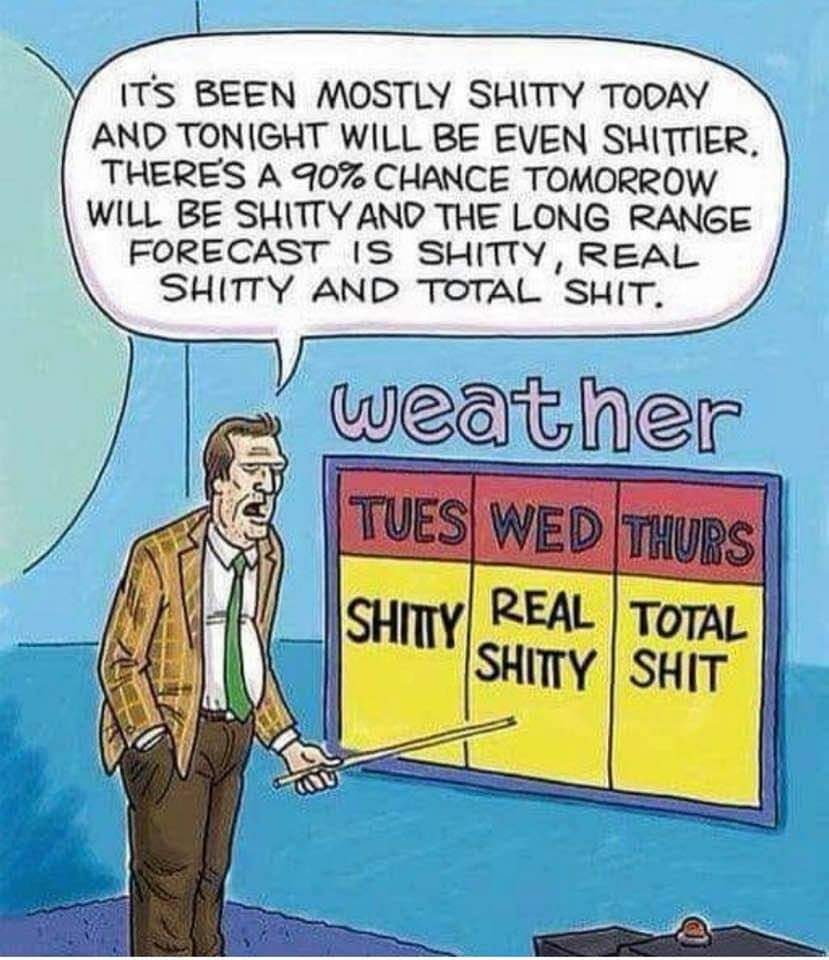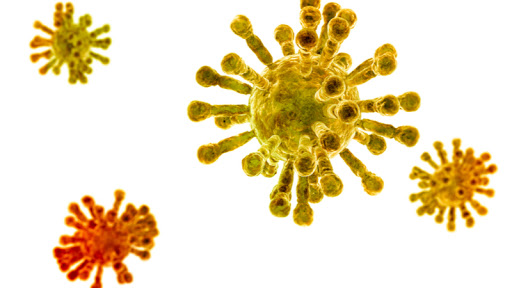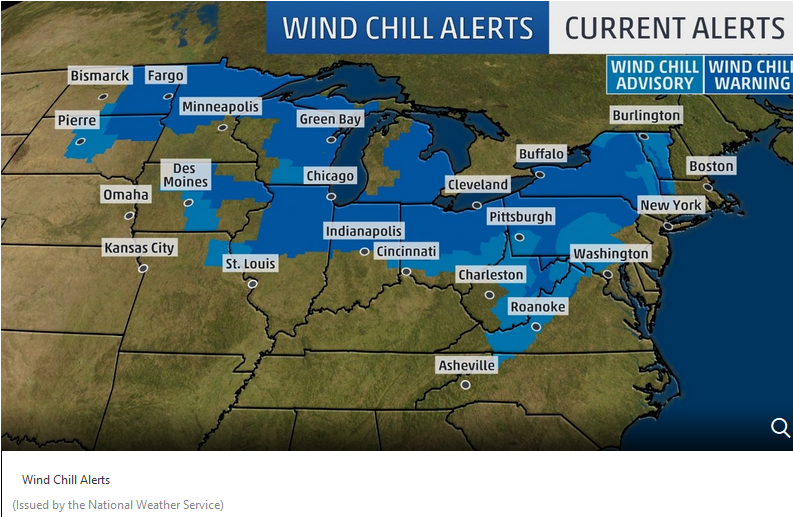And now…. the Weather

One man Who's Got Something to Say About That

Consider how a record player works. There’s a record with grooves of various frequencies and amplitudes spinning around. There’s a tonearm with a phonographic cartridge in it that tracks the record. This phono cartridge holds a tiny diamond tip on the end of a shaft, attached to the cartridge body with a flexible joint.
Being a mechanical system, the tonearm and cartridge have resonances. The two major resonant modes are 1) the diamond tip resonating at high frequencies; 2) the tonearm resonating at low frequencies.
High frequency resonances occur when the diamond tip is tracing out grooves on the record that are heavily amplitude-modulated at high frequencies – like loud bell strikes. At resonance, the diamond tip is destructive to the grooves of the record, operating like a tiny jackhammer.
At much lower frequencies, e.g. cannon-shots on the 1812 Overture, visible movement of the tonearm occurs, and even cases where the tonearm jumps out of one grove and into another. Lateral displacement.
Now think of the influenza virus mechanical structure: little masses on stalks (viral spikes) attached to a much more massive viral body. This is another grossly bi-modal resonant mechanical system. There will be at least two resonant points that correspond to frequencies that excite the spikes and the bodies.
The spinning record for the virus is thermal energy. Within the host body, what matters most is the thermal energy that comes from the temperature of the host. A fever is both a defensive mechanism and the result of a body combating an infection. A virus can cease to function beyond a certain temperature, but sometimes lethal damage occurs regardless.
Viruses have evolved to take advantage of natural processes like absorption (a liquid or other material being absorbed by another liquid or solid) and adsorption (atomic or molecular material adhering to the surface area of some material or other.) The latter comes into play because of how viruses stick to metal or plastic surfaces and resist being washed or blown away. But they stick even better to our organic skin and hair, etc. so they leave the metal, porcelain, or plastic, and adhere to us. Fortunately, they stick even better yet to the fatty lipids in common soap.
Outside of a potential host body, the thermal energy source that matters most to the viral structure is sunlight. Water vapor, being the most abundant greenhouse gas for Planet Earth, is a nearly ideal medium for converting photons of infrared light into mechanical energy. Its absorption spectrum is so broad that it is referred to as an absorption continuum.
Mechanical resonances will be set up at various partial pressures of the water vapor, due to the gas spring nature of the vapor. Within tiny pockets of water vapor, mechanical movements of water molecules will become synchronized, resulting in coherent movement of those water molecules. When this coherent movement occurs, ion generation due to collisions is minimized. Whereas incoherent movement results in more ions – even gross-level electric charge build-ups in the water vapor. This is the basis for lightning strike conditions in clouds.
The mechanical system of the virus is tuned to the resonances generated in the water vapor, under the right conditions (vapor pressures.) Small resonances result in movement of the viral spikes. Large resonances result in movement of the bodies as a whole. Sunlight provides for vapor resonances at higher frequencies. Host body thermal energy provides for resonances at lower frequencies.
Host body thermal energy might also provide for resonances at lower frequencies. Vibrating viral spikes might lead to penetration of host cell membranes. Jumping viral bodies might lead to attacks on adjacent host tissue cells.
Poor conditions for generating this movement of the spikes maybe be signified by electrical discharges, i.e. lightning. Global hot spots of influenza infection such as Southeast Asia and the east coast of the U.S. show fewer lighting strikes. Global areas where outbreaks of influenza are virtually non-existent, such as Africa and the Tropics, show higher rates of lightning strikes.
Seasonal weather variations can likewise be characterized by lightning activity. It is low in the cooler months when outbreaks are more likely, and higher in warmer months when lightning occurs more frequently, and incidences of flu drop off dramatically. These differences may be explained by differences in humidity, leading to differences in water vapor pressure. [ed. – while not proven, this is a fascinating claim, and well thought out.]
Host body temperature differences infer varying internal thermal radiation patterns. For example, a dog’s body temperature is higher than that of a human. Dogs and humans contract different viral infections. But the human body’s temperature rises during viral infections. Different internal thermal radiation occurs.
There are many implications for humidity and temperature differences leading to different viral behaviors. H2O resonances at different vapor pressures, and thermal radiation at different frequencies and intensities, create together complex mechanical systems that can be exploited by different strains of coronaviruses, with different spike and body construction.
But while the mechanics of a phonographic record player are a metaphor, a coronavirus like influenza plays a deadly music, composed by thermal radiation, pressed onto a record made of water vapor. It seems likely that other deadly viruses might be found in the same record collection.
David Plummer is a self-titled propellerhead who studied mathematics at Harvard University, before concerning himself with hardware and software systems. The math rock star he admires most is Alan Turing.
These days he spends his time doting on his granddaughters, Grace and Zoey, with assistance from his beloved wife of 40 years, Joan, their children Devon and Nathan, and their inspirations, Vivian and Kate.
David has been known to read papers about mice that have Alzheimer’s and then build stuff for experimenting on himself. Really.


Apparently warm air from Morocco has made its way to the North Pole causing the upcoming vortex where a southerly Jet Stream poles super-freezing air down into temperate zones. An increase in such vortices fits well within even conservative scientific models of the effect of climate change, which is increasing faster than anyone had ever dared to fear possible.
Please bundle up and bring animals indoors. Please report any stray animals you see two authorities as the serious cold approaches.
Update Jan 31.: Chicago reached windchill of -52 below zero.
At least four locations have tied or set all-time record lows:

Spring as come and Spring as gone, but Summer beckons.
I grew up assuming that August was the hottest month, and it was supported by first hand experiences in recent years, as I am usually found outdoors at Martinfest in Nazareth, PA in August.
But that is the first weekend of the month and apparently more like July than the rest of August. In fact, July is almost always the hottest month of the year in the USA.
And now, if you will excuse me, I am heading out into the beautiful day, while June lasts.